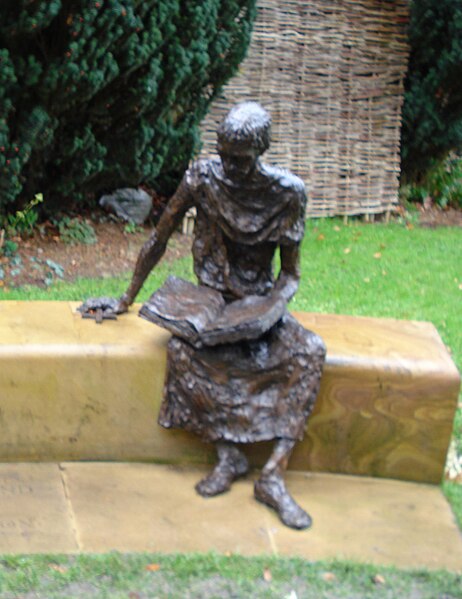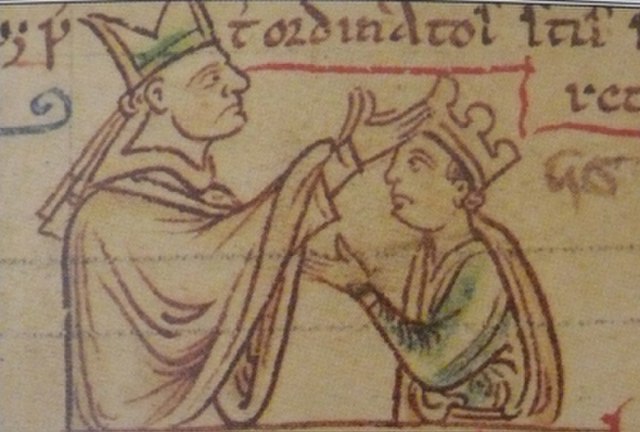Edmund of Abingdon was an English-born prelate who served as Archbishop of Canterbury. He became a respected lecturer in mathematics, dialectics and theology at the Universities of Paris and Oxford, promoting the study of Aristotle. Having already an unsought reputation as an ascetic, he was ordained a priest, took a doctorate in divinity and soon became known not only for his lectures on theology but as a popular preacher, spending long years travelling within England, and engaging in 1227 preaching the Sixth Crusade. Obliged to accept an appointment as Archbishop of Canterbury by Pope Gregory IX, he combined a gentle personal temperament with a strong public stature and severity towards King Henry III in defence of Magna Carta and in general of good civil and Church government and justice. He also worked for strict observance in monastic life and negotiated peace with Llywelyn the Great. His policies earned him hostility and jealousy from the king, and opposition from several monasteries and from the clergy of Canterbury Cathedral. He died in France at the beginning of a journey to Rome in 1240. He was canonised in 1246.

Image of Edmund from the Nuremberg Chronicle (1493)
Statue of St. Edmund on the altar in St. John the Evangelist Church (Logan, Ohio)
Bronze statue of Edmund at St Edmund Hall, Oxford
Henry III, also known as Henry of Winchester, was King of England, Lord of Ireland, and Duke of Aquitaine from 1216 until his death in 1272. The son of King John and Isabella of Angoulême, Henry assumed the throne when he was only nine in the middle of the First Barons' War. Cardinal Guala Bicchieri declared the war against the rebel barons to be a religious crusade and Henry's forces, led by William Marshal, defeated the rebels at the battles of Lincoln and Sandwich in 1217. Henry promised to abide by Great Charter of 1225, a later version of the 1215 Magna Carta, which limited royal power and protected the rights of the major barons. His early rule was dominated first by Hubert de Burgh and then Peter des Roches, who re-established royal authority after the war. In 1230, the King attempted to reconquer the provinces of France that had once belonged to his father, but the invasion was a debacle. A revolt led by William Marshal's son Richard broke out in 1232, ending in a peace settlement negotiated by the Church.

Henry III depicted in a manuscript from the 13th century
The Battle of Lincoln in 1217, showing the death of Thomas, Count of Perche (left), by Matthew Paris
The Battle of Sandwich in 1217, showing the capture of the French flagship and the execution of Eustace the Monk (r) and the support of the English bishops (l), by Matthew Paris
Matthew Paris's depiction of the second coronation of Henry in 1220







